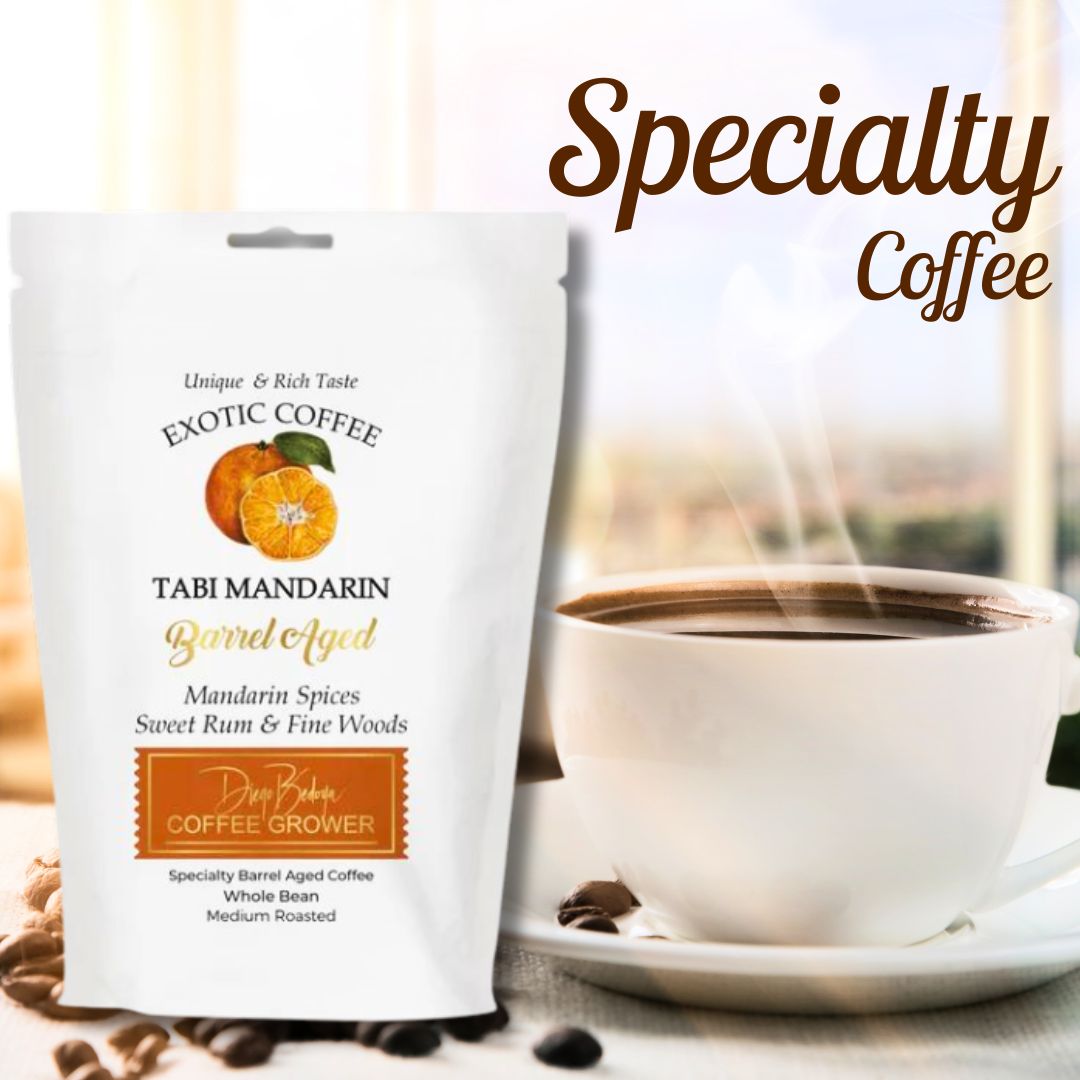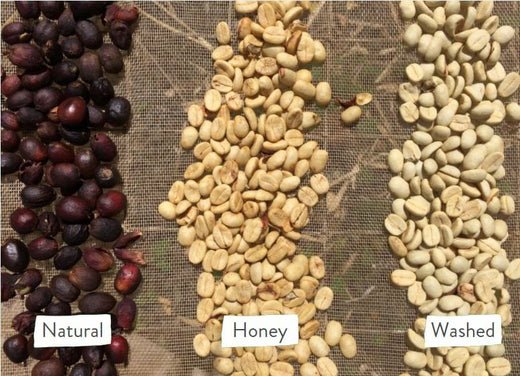Before we start talking about specialty coffees, let us go back in history. In the 1970s, Erna Knutsen, a coffee importer of Norwegian-American descent, introduced the term "specialty coffees'' to distinguish premium gourmet coffee from the mass-produced blends dominating the market. Knutsen's pioneering efforts ignited a movement centered on celebrating the distinct flavors and traits of coffee beans sourced from various regions, elevating the appreciation for high-quality coffee worldwide. Colombia as a producer of premium quality coffees in the world, is no stranger to specialty coffees, in fact it is one of the most important producers of specialty coffees in the world.
When we talk about specialty coffees, we also use the term ‘terroir” that refers to the environmental factors—such as soil composition, climate, altitude, and topography—that collectively influence the unique characteristics of coffee beans grown in a specific region. Colombia, due to the terroirs in each region, specific microclimates and differentiated new coffee varieties, has made great efforts to the pursuit of excellence in specialty coffees, which stand as a testament to human passion, where each bean tells a story of resilience, adaptation, and the relentless quest for perfection. Within the specialty coffees known in Colombia we have Caturra, Colombia Castillo, Bourbon, Geisha, Tabi, Colombia Typica, Colombia Sydra, among others, each variety has its own unique characteristics and flavor profiles, influenced by factors such as altitude, soil, climate, and the processing methods.
Currently, the designation of a coffee as "specialty" typically comes from a combination of factors, including its origin, quality, flavor profile, and processing methods. While there is not a single governing body that officially designates what qualifies as specialty coffee, there are industry standards and organizations such as the Specialty Coffee Association (SCA) that provide guidelines and certification processes,
According to the Specialty Coffee Association (SCA), specialty coffee is of high quality when scoring 80 points or above on their SCA grading scale (which ranges from 0 to 100). This grading considers factors such as coffee’s aroma, flavor, acidity, body, and aftertaste. Additionally, specialty coffee is often sourced from specific regions known for producing exceptional beans, and it typically involves meticulous farming, harvesting, and processing methods. However, ultimately, it is the collective judgment of coffee professionals, roasters, and consumers that determines whether a coffee meets the criteria to be labeled as “specialty.”
Colombia, being one of the world’s top coffee-producing countries, offers a wide variety of specialty coffees, which are cultivated in the Departments of Huila, Antioquia, Caldas, Quindio, Risaralda, Tolima, Santander, Norte de Santander, Cauca, Nariño, Valle del Cauca, and Sierra Nevada de Santa Marta.
Now let us talk about the most important varieties of specialty coffees produced in Colombia:
- Caturra: A variety that originated in Brazil, through a natural mutation of the Bourbon variety. Discovered in the late 1930s on a plantation in Minas Gerais, this mutation resulted in a shorter coffee plant with smaller leaves and cherries compared to the traditional Bourbon variety. This variety was spread to other countries in Central and South America, including Colombia where it is known for its excellent cup quality and high yield. It has been widely cultivated in Colombia and often produces a clean, sweet cup with bright acidity and notes of citrus and caramel. It is cultivated primarily in higher-altitude areas where conditions are conducive to producing high-quality coffee. These higher altitudes often result in slower cherry maturation, denser beans, and more complex flavor profiles, making Colombian Caturra coffee highly sought after in the specialty coffee market.
- Colombia Castillo: Castillo is a hybrid variety resulting from a cross between the Timor Hybrid (a variety known for its disease resistance) and the Colombian Caturra variety. developed in Colombia through a breeding program aimed at creating coffee plants to resist diseases such as coffee leaf rust (Hemileia vastatrix) and coffee berry disease (Colletotrichum kahawae). It is known for its high productivity and resistance to pests and diseases while still maintaining a great coffee quality, with flavors ranging from fruity to chocolatey. Castillo coffee is named after Jaime Castillo, a researcher who played a significant role in the development of the variety and it is now widely cultivated in Colombia. When comparing the taste between specialty coffees Caturra and Colombia Castillo, we can see that:
-
Colombia Typica: The Typica coffee variety has its origins in Ethiopia, which is widely regarded as the birthplace of Coffea arabica (the species from which most specialty coffee varieties derive). Typica is one of the oldest and most traditional Arabica coffee varieties that spread from Ethiopia to other coffee-growing regions through natural dispersion and human migration. This variety was introduced to Colombia during the late 18th century, and it was amongst the first varieties of coffee to be planted in Colombia’s fertile mountain regions, where the climate and altitude provided ideal conditions for coffee cultivation. Typica beans are known for their balanced flavor profile, often with notes of chocolate, nuts, and citrus. They are typically grown at higher altitudes for optimal quality. It played a crucial role in shaping the flavor profiles and cup characteristics of coffees from these regions. Typica coffee is cultivated particularly by smallholder farmers in traditional coffee-growing regions. It is prized for its classic flavor profile, which often includes notes of chocolate, nuts and citrus, and its adaptability to different growing conditions while maintaining its distinctive flavor characteristics that contribute to the overall diversity and quality of
Colombian specialty coffees.
Colombia Typica, Caturra, and Castillo each offer unique characteristics that appeal to different preferences in specialty coffee. Typica is cherished for its balanced cup profile and historical significance, while Caturra and Castillo bring their own distinct flavors and traits to the table, reflecting advancements in coffee cultivation and genetic research.
- Geisha/Gesha: Geisha coffee, also spelled "Gesha," has its origins in Ethiopia, particularly in the Gesha region of southwestern Ethiopia. It is believed that the Geisha coffee variety is one of the heirloom varieties native to Ethiopia, where coffee is thought to have originated. Geisha coffee gained international attention when it was introduced to Panama in the 1960s. The story goes that in the late 1950s or early 1960s, seeds of the Geisha variety were sent from Costa Rica to Panama for experimental planting, then it was also successfully cultivated in other coffee-growing countries, including Colombia. Colombian Geisha beans exhibit a unique and exotic flavor profile, with floral, tea-like notes and a delicate acidity and complexity.
-
Tabi: The Tabi coffee variety was developed in Colombia by the National Federation of Coffee Growers of Colombia (Federación Nacional de Cafeteros de Colombia) as part of its ongoing efforts to improve coffee quality and disease resistance, is a hybrid variety created by crossing three other coffee varieties: Typica, Bourbon, and Timor Hybrid. The Typica and Bourbon varieties are renowned for their excellent cup quality, while the Timor Hybrid is known for its resistance to diseases such as coffee leaf rust. The Tabi coffee variety was officially released to Colombian coffee farmers in 2002. Since then, it has gained popularity among growers, particularly in regions where disease pressure is high. Tabi coffee is known for its great cup quality, with a balanced flavor profile and bright acidity, making it a valuable addition to Colombia's diverse array of specialty coffees.
Colombian Geisha and Tabi are exceptional, catering to different preferences and offering unique tasting experiences.
There are other important Colombian specialty coffees that deserve to be explained in this blog, as well as all the specific environmental factors and processing methods that will influence in each of the specialty coffees. We will continue this discussion in PART 2 of Colombian Specialty coffees.
To give you a comprehensive perspective of the colombian specialty coffees we described above, here is a table comparing cup taste, acidity, body and flavor complexity:
|
Variety |
Cup Taste |
Acidity |
Body |
Flavor Complexity |
|
Caturra |
Bright, clean |
High |
Light to medium |
Moderate |
|
Colombia Castillo |
Balanced, smooth |
Medium |
Medium |
Moderate |
|
Colombia Typica |
Delicate, sweet |
High |
Light |
High (floral, citrus) |
|
Tabi |
Nutty, chocolatey |
Medium |
Medium |
Moderate (caramel, chocolate) |
|
Geisha |
Floral, tea-like |
High, bright, citric |
Light |
Very High (jasmine, stone fruit) |
|
Bourbon |
Smooth, well-rounded |
Medium |
Medium |
High (fruity, chocolate) |
|
Colombia Sidra |
Winey, complex |
Medium to high |
Medium to full |
High (berry, stone fruit) |
Keep in mind that there are other factors that also influence the overall taste of each specialty coffee, like environmental factors (rain, shadow, clouds, humidity, soil), altitude of the culture, processing methods and roasting types.



